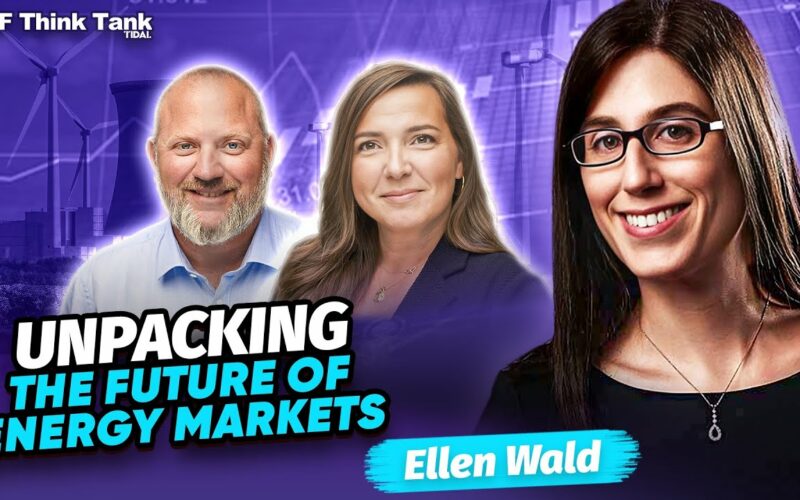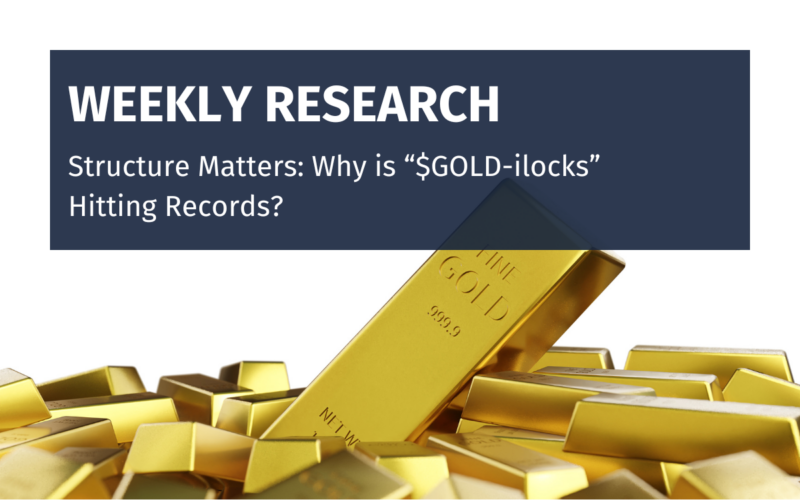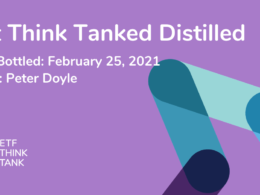The Fed is still on schedule to cut interest rates this year, but the labor market might be weaker than many think and oil prices could soon wreak havoc on consumers. Those are just some of the thoughts of George Goncalves, a bond market veteran and strategist who’s spent more than two decades analyzing the global macroeconomic landscape. He joins the ETF Think Tank to offer his thoughts and where conditions might be headed next.
The conversation starts with a discussion of the quality of the data that the markets are considering right now, particularly on the labor market side. Goncalves says that when you look at the private sector data and the government data, there are a lot of inconsistencies. There could be different counting methodologies at play, but he notes that the wedges we’re seeing right now in the data typically only happen after a recession has occurred, not before. He’s particularly bothered by the non-farm payroll reports where you can get monster numbers one month only for them to be quietly revised lower in subsequent months. His overall view is that if you strip out the travel & leisure sectors, there’s been little job growth over the past several months.
Goncalves admits that he has one of the more dovish stances on the street in terms of what he thinks the Fed will do. He sees the possibility of 100 basis points of cuts yet this year and 200 basis points by the time all is said and done sometime in 2025. If you’re the Fed, you probably don’t want to wait until inflation hits 2% because then it’s probably too late. Easing starting this summer should be appropriate and people forget that the Fed can adjust policy very aggressively if needed. He believes that the unemployment rate will be important. The Fed will likely need to see cracks at the surface, such as the unemployment rate rising above 4% and NFP drifting towards 100K instead of 200K.
Goncalves also says that the housing market is also signaling a stalemate between buyers and sellers. Interest rates have caused that and it’s also damaged the mobility of home buyers and owners. Housing affordability is at one of its worst levels in history and that could mean an extended period where it’s actually cheaper to rent than own. Incomes required to buy a home have become too high and something needs to change, probably a housing price correction. The home is still the largest asset for most Americans and a 15-20% hit to home prices would be much more impactful than a stock market decline.
Overall, Goncalves believes that the current environment argues for a yield steepener. Long-term rates could rise, but he doesn’t believe that it would be much. Short-term rates are what will rally lower because of the Fed. He also believes that the yield curve “disinversion” should happen by this fall. Historically, it tends to happen about 18 months in and we’re nearly there now. If the 10-year gets to 4.60% to 4.70%, that should impact stocks. He’s also a little concerned about oil, especially in the current geopolitical environment. A lack of supply could be one of the final straws for the consumer if oil shoots up to $100+. If oil stays high into the 3rd or 4th quarter, that could be trouble for consumers. Then the Fed might be forced to cut in an inflationary environment and that’s what you don’t want.
Other key takeaways:
- Another of Goncalves’ observations on the labor market is that initial jobless claims are low, but continuing claims are high. It’s a cycle that’s had a very uneven run.
- If you’re looking for more important labor market data, look at hours worked and full-time vs. part-time employment. Managers tend to trim hours instead of laying off and that could be an early sign of a trend developing.
- Consumers are becoming severely overleveraged. Personal loans, credit cards, auto loans, small business loan interest expenses are really ramping up. We’re approaching the very unusual point where these interest expenses are starting to become larger than mortgage interest expenses.
- With so many uncertainties, is this one big case for index investing? If the data and the Fed aren’t reliable, why not just own the market? Goncalves thinks that there’s some merit in that idea. At the same time, there are mile markers for excess. Look at who’s being impacted most and how that will affect the outlook.
- What matters more than the huge Fed balance sheet is bank reserves and bank liquidity. If the Fed slows down from an $80 billion taper to $40 billion, the financial system should be able to handle that.
Disclosure
All investments involve risk, including possible loss of principal.
The material provided here is for informational purposes only and should not be considered an individualized recommendation or personalized investment advice. The investment strategies mentioned here may not be suitable for everyone. Each investor needs to review an investment strategy for his or her own particular situation before making any investment decision.
All expressions of opinion are subject to change without notice in reaction to shifting market conditions. Data contained herein from third-party providers is obtained from what are considered reliable sources. However, its accuracy, completeness, or reliability cannot be guaranteed.
Examples provided are for illustrative purposes only and not intended to be reflective of results you can expect to achieve.
The value of investments and the income from them can go down as well as up and investors may not get back the amounts originally invested, and can be affected by changes in interest rates, exchange rates, general market conditions, political, social, and economic developments, and other variable factors. Investment involves risks including but not limited to, possible delays in payments and loss of income or capital. Neither Tidal nor any of its affiliates guarantees any rate of return or the return of capital invested. This commentary material is available for informational purposes only and nothing herein constitutes an offer to sell or a solicitation of an offer to buy any security and nothing herein should be construed as such. All investment strategies and investments involve risk of loss, including the possible loss of all amounts invested, and nothing herein should be construed as a guarantee of any specific outcome or profit. While we have gathered the information presented herein from sources that we believe to be reliable, we cannot guarantee the accuracy or completeness of the information presented and the information presented should not be relied upon as such. Any opinions expressed herein are our opinions and are current only as of the date of distribution, and are subject to change without notice. We disclaim any obligation to provide revised opinions in the event of changed circumstances.
The information in this material is confidential and proprietary and may not be used other than by the intended user. Neither Tidal nor its affiliates or any of their officers or employees of Tidal accepts any liability whatsoever for any loss arising from any use of this material or its contents. This material may not be reproduced, distributed, or published without prior written permission from Tidal. Distribution of this material may be restricted in certain jurisdictions. Any persons coming into possession of this material should seek advice for details of and observe such restrictions (if any).












